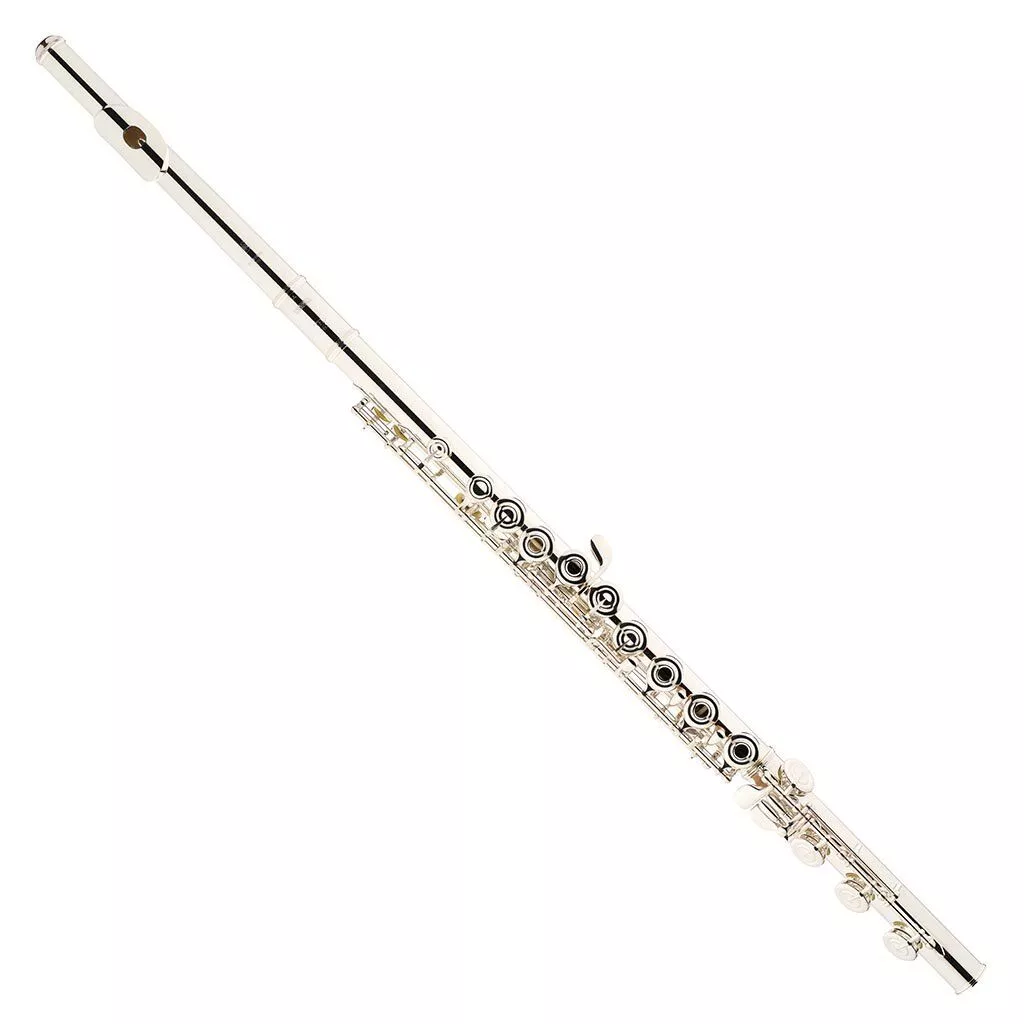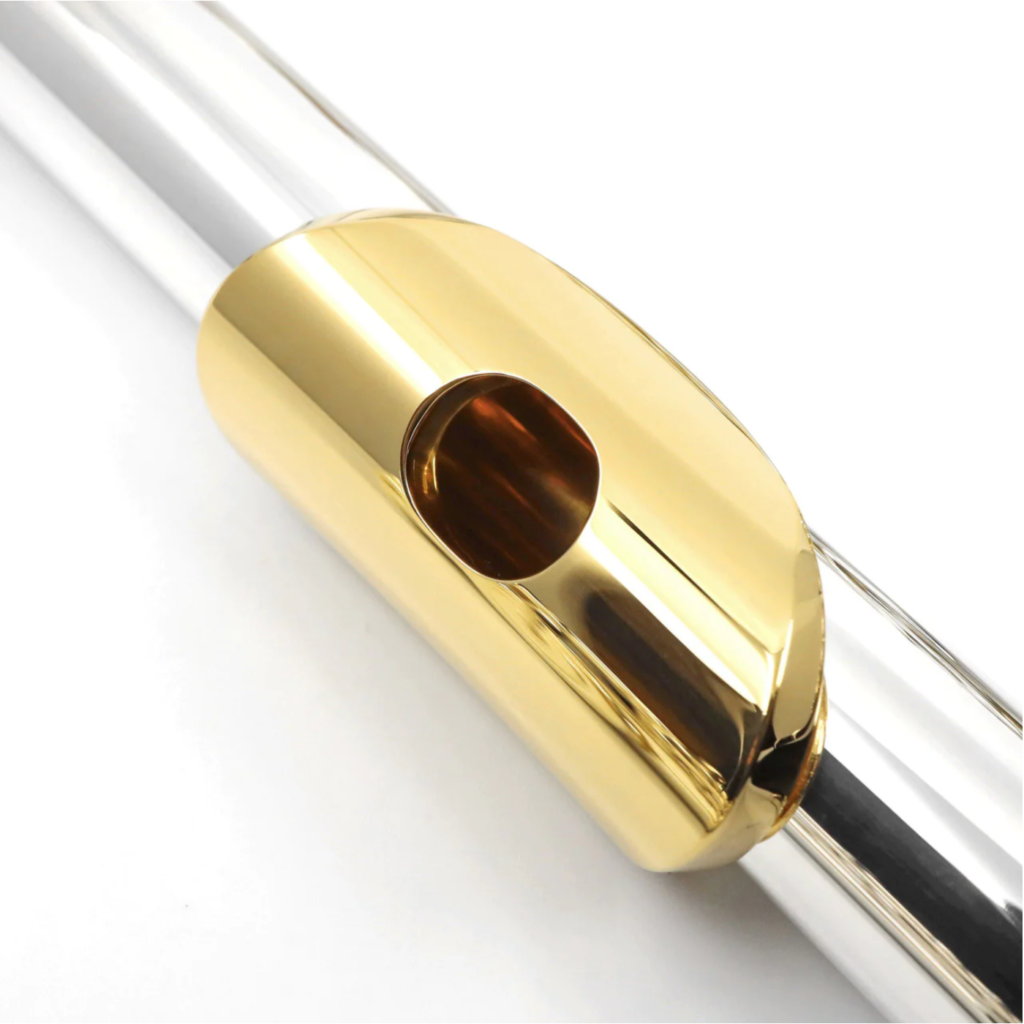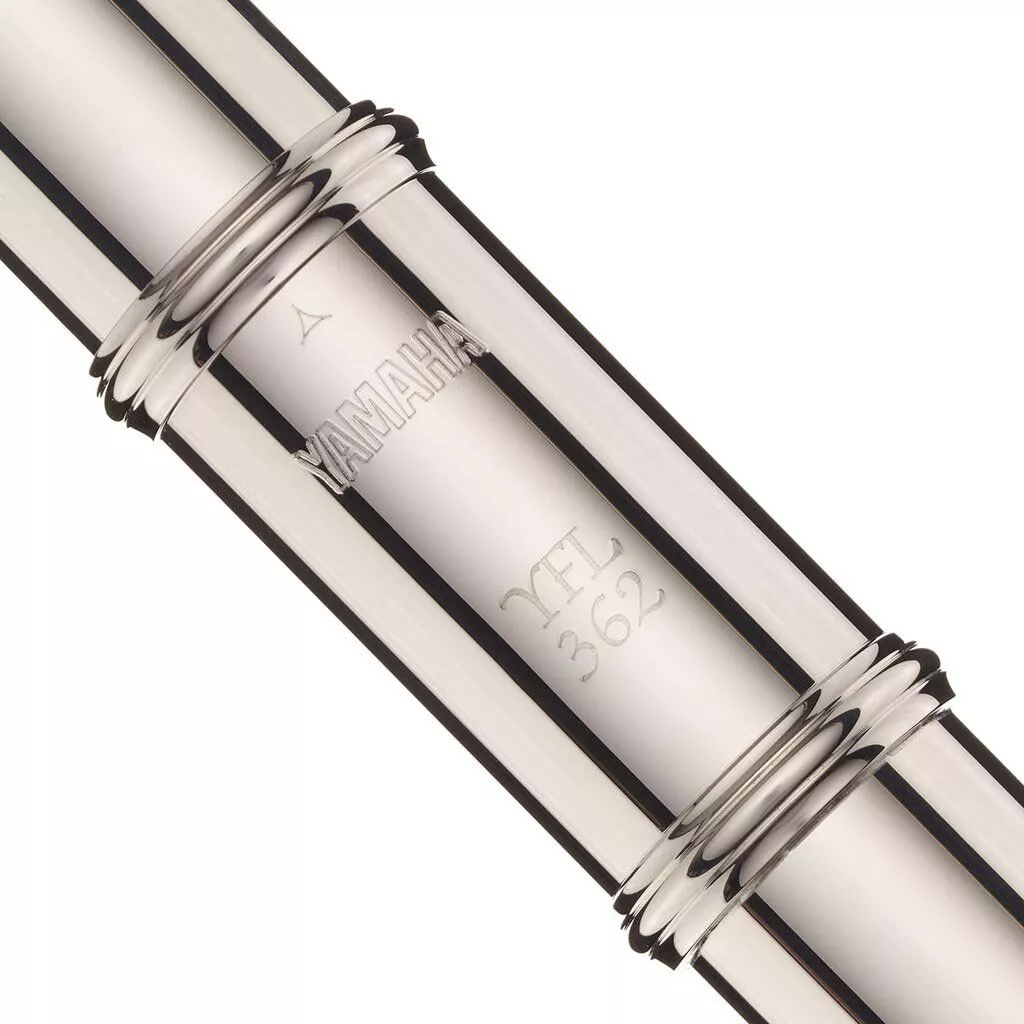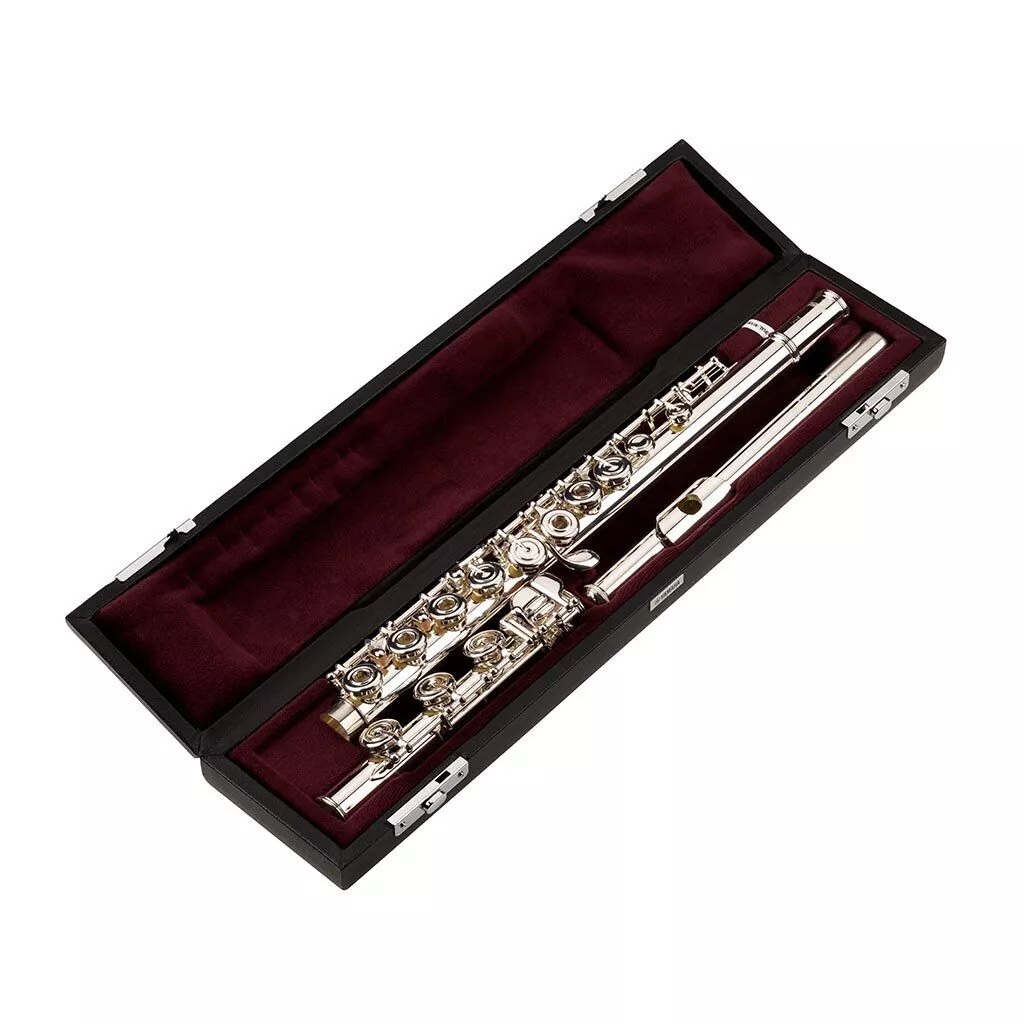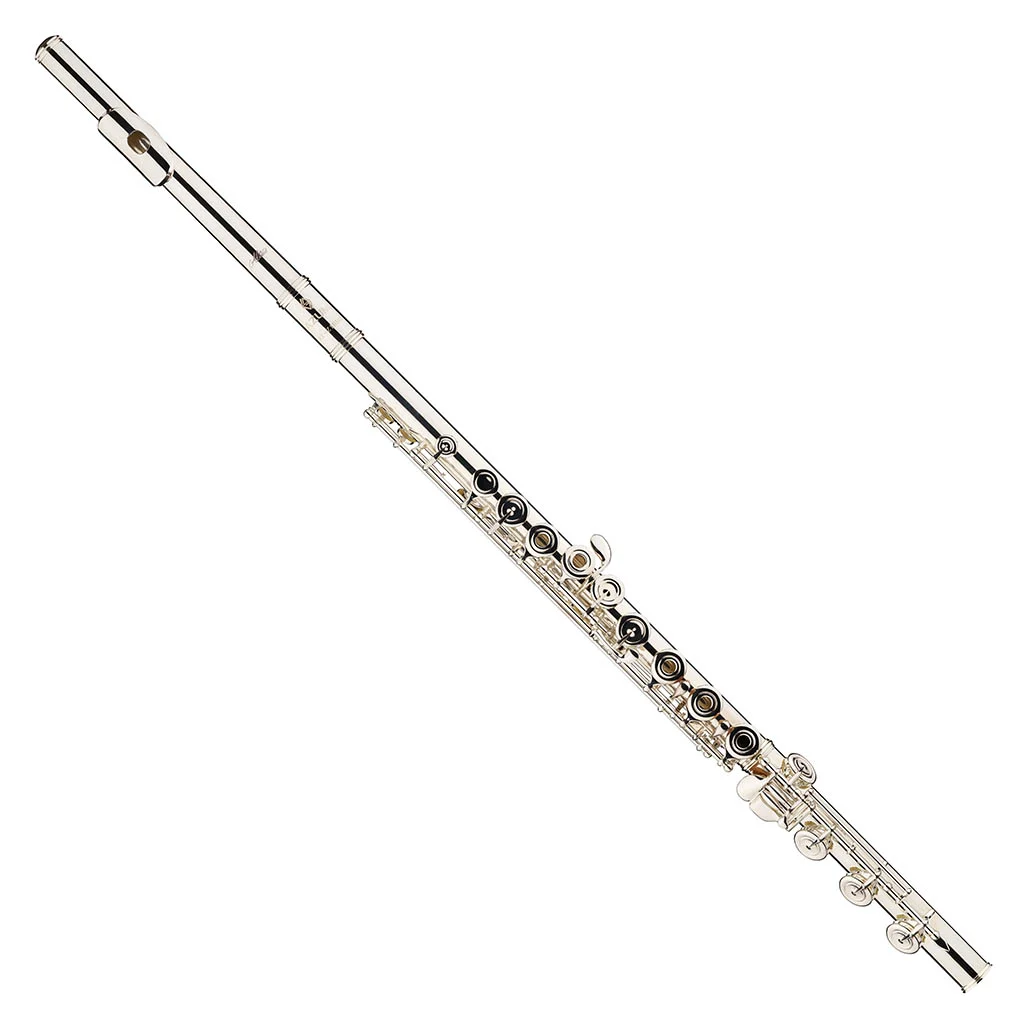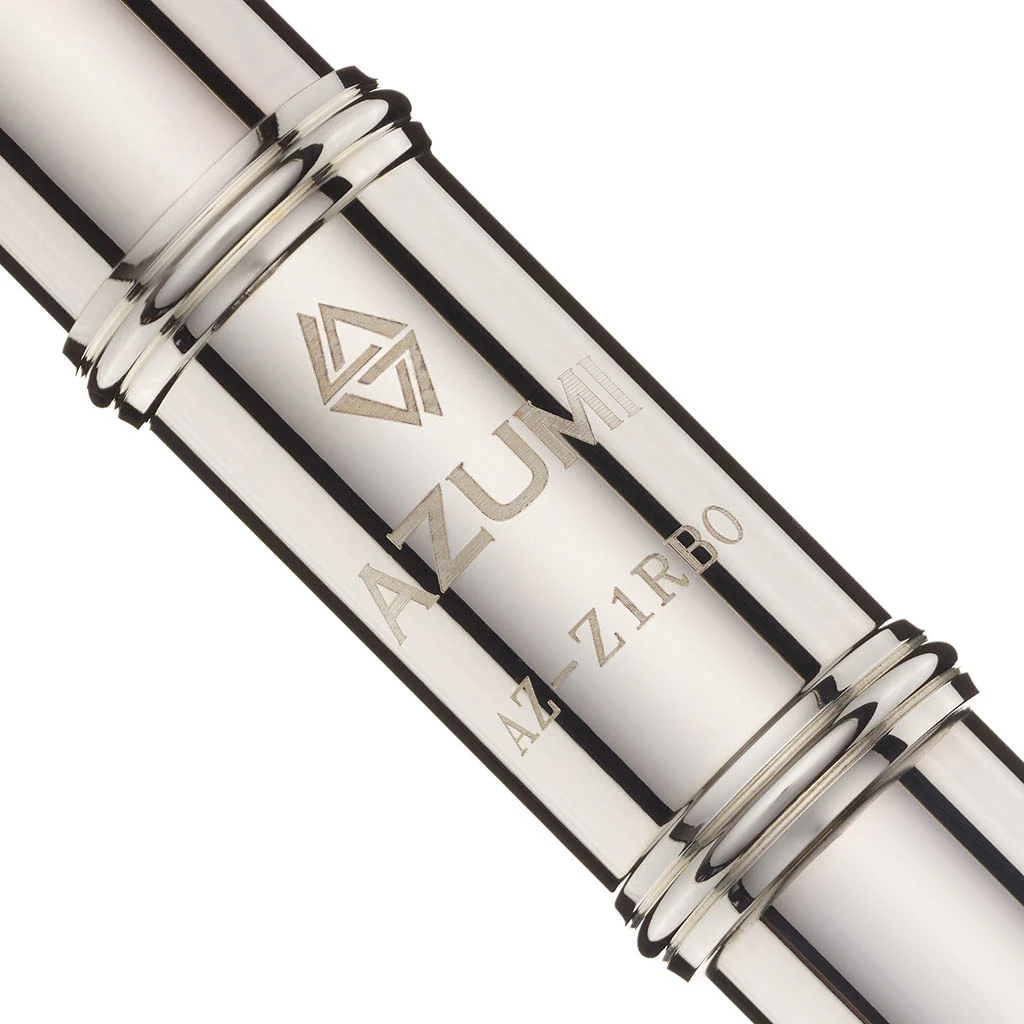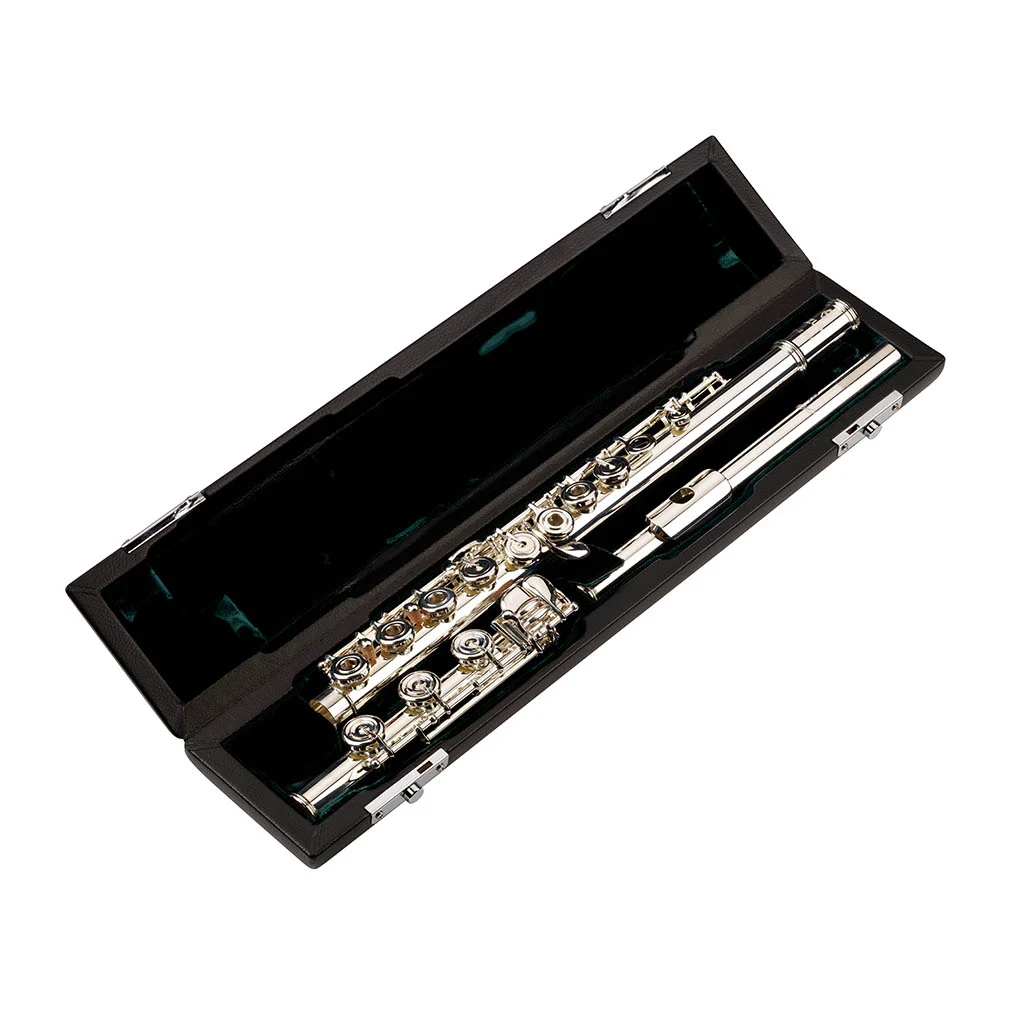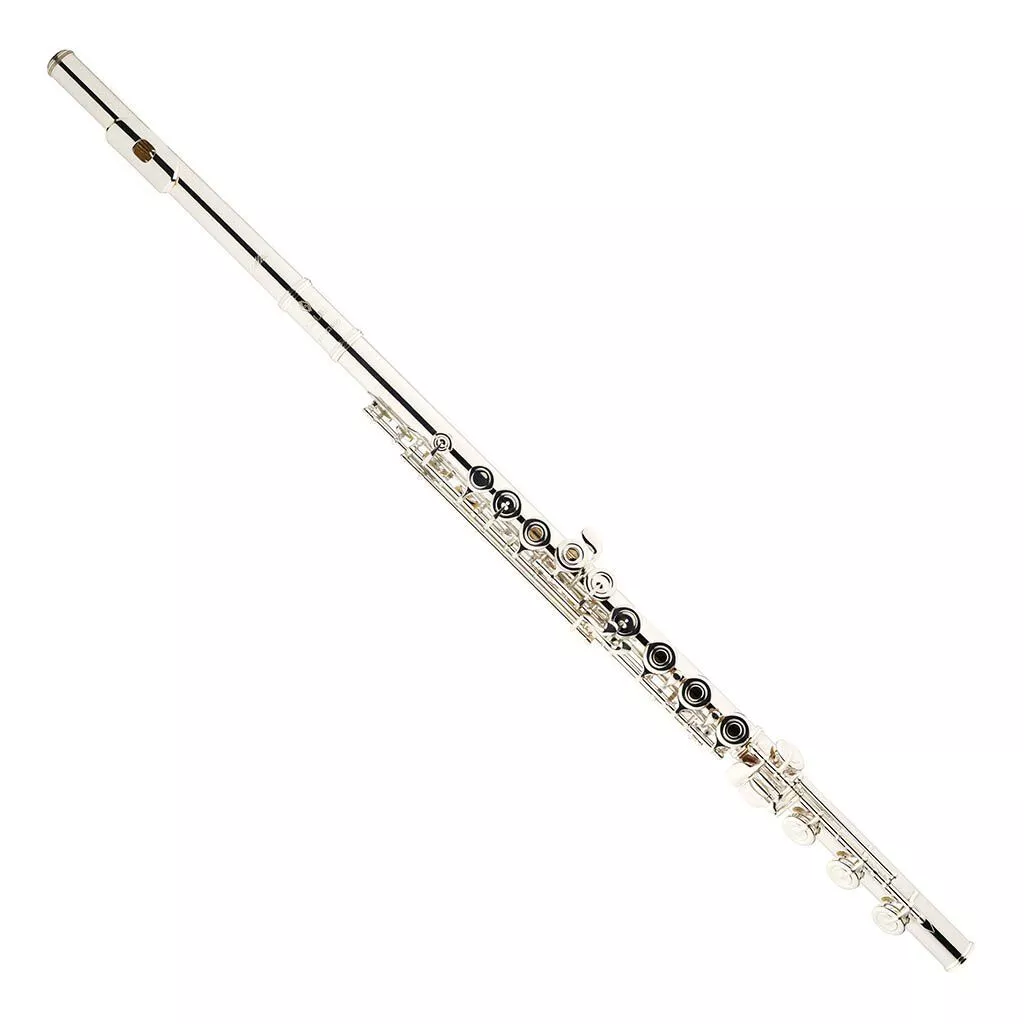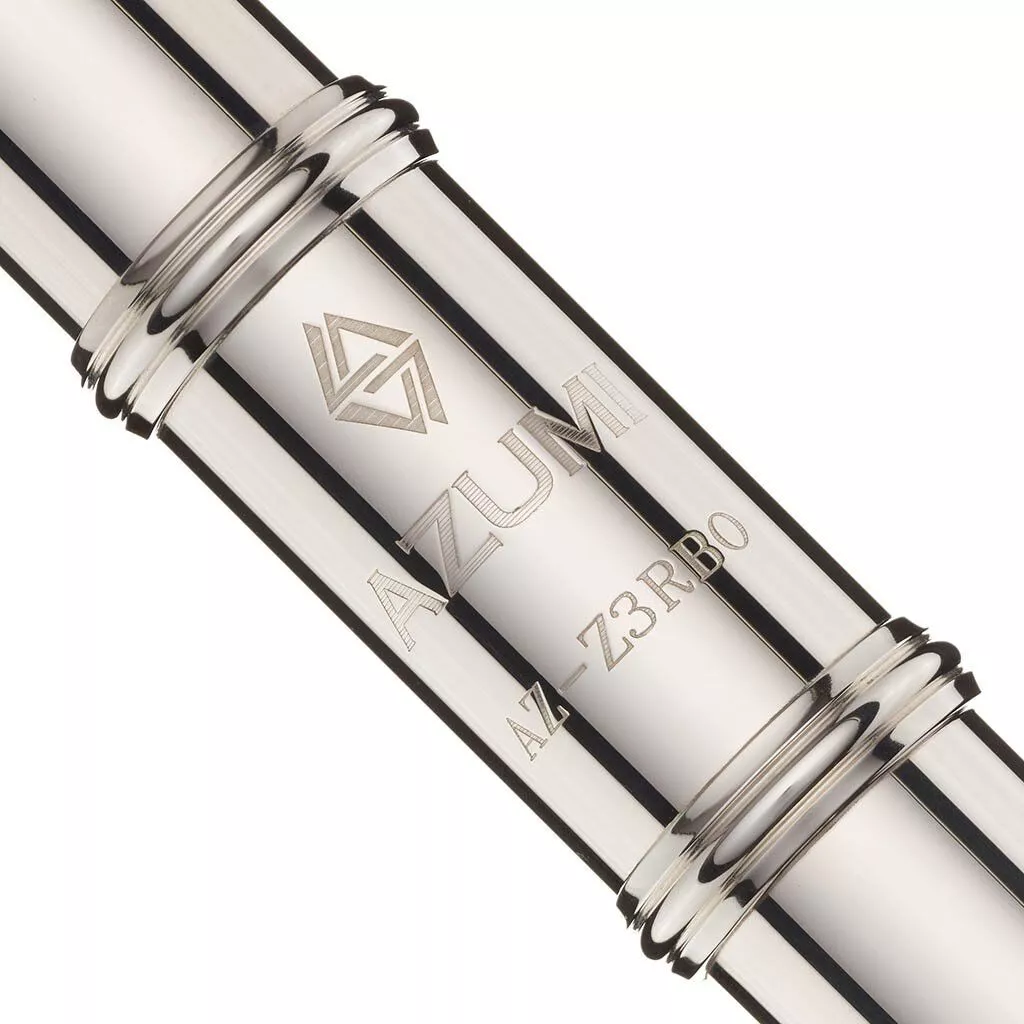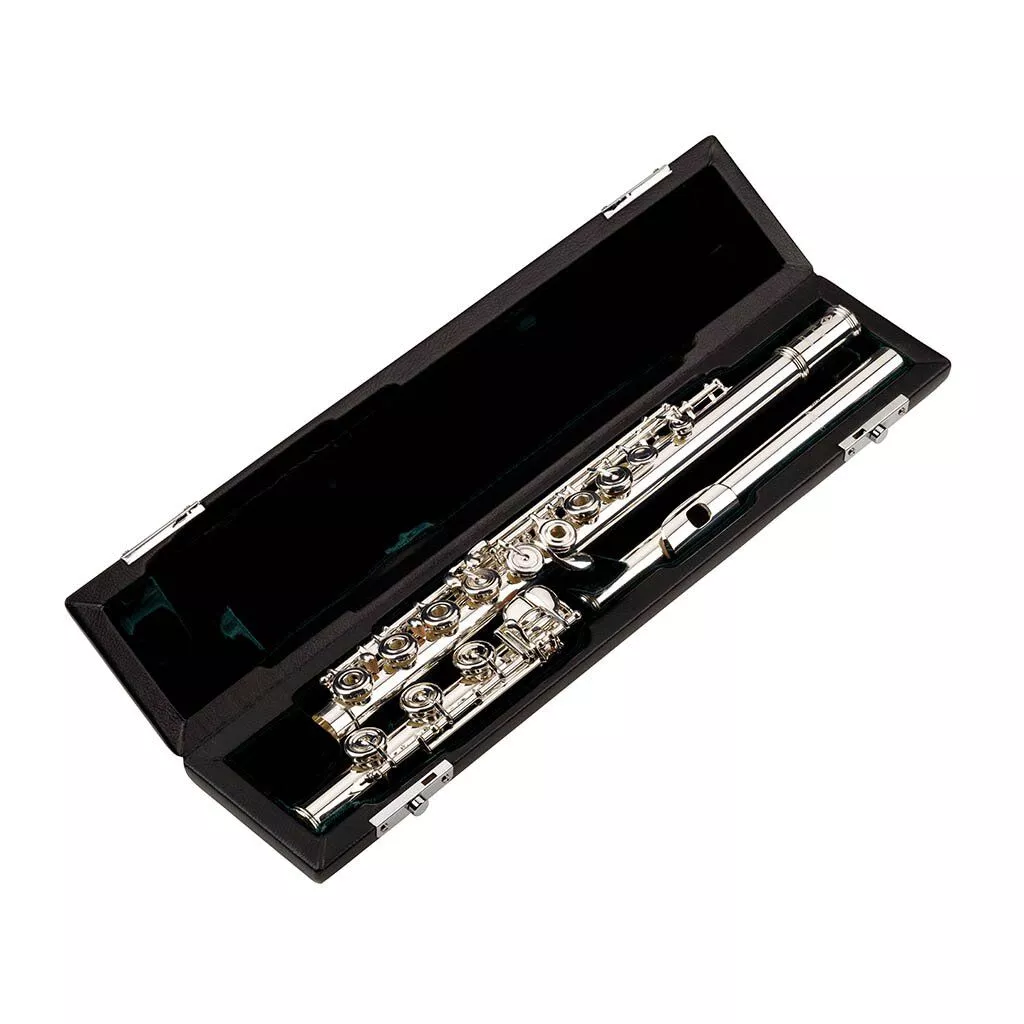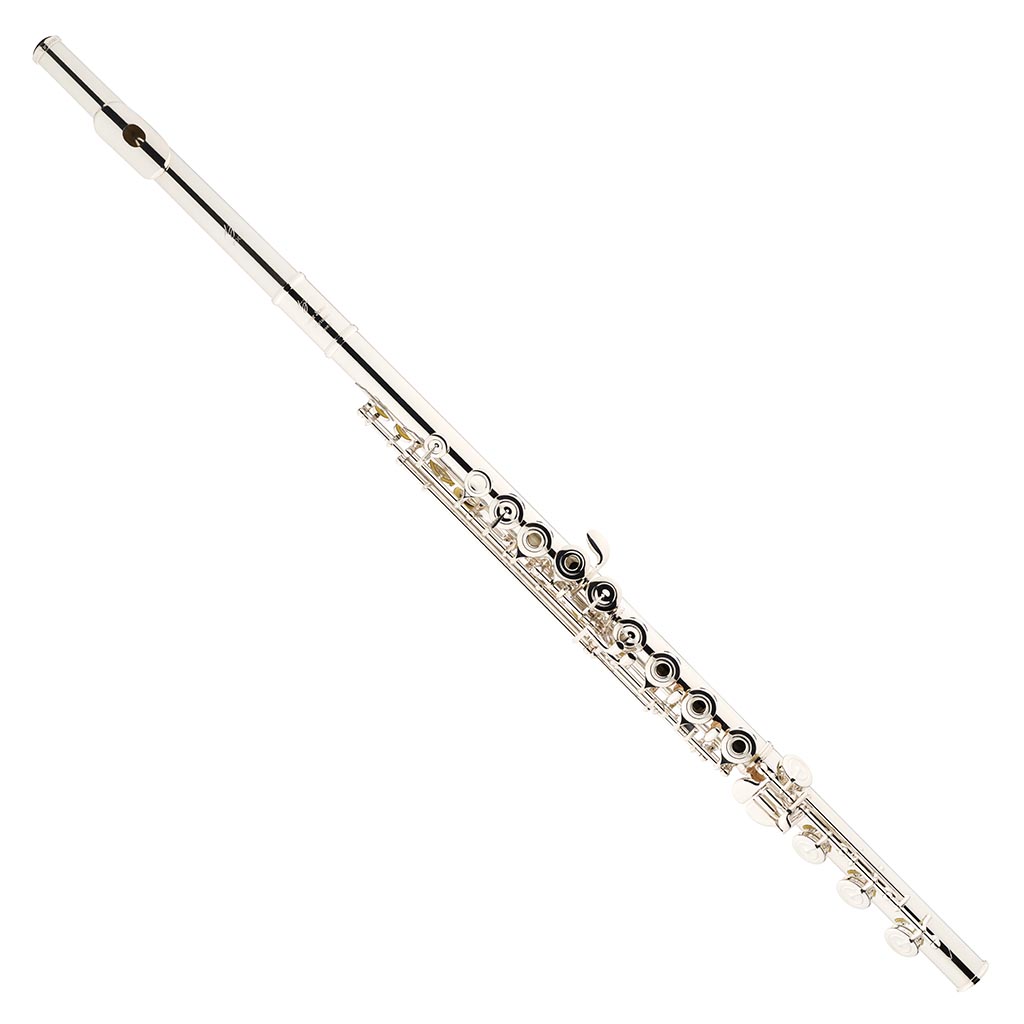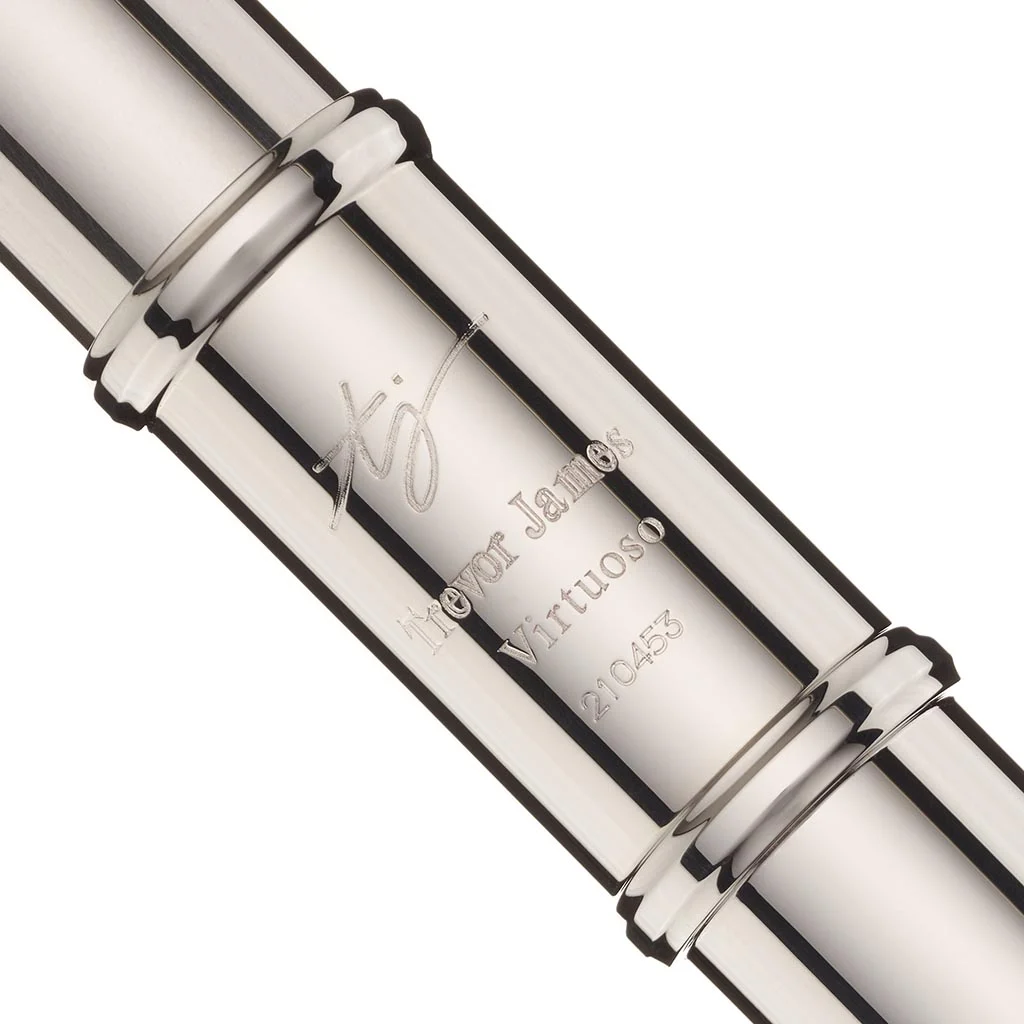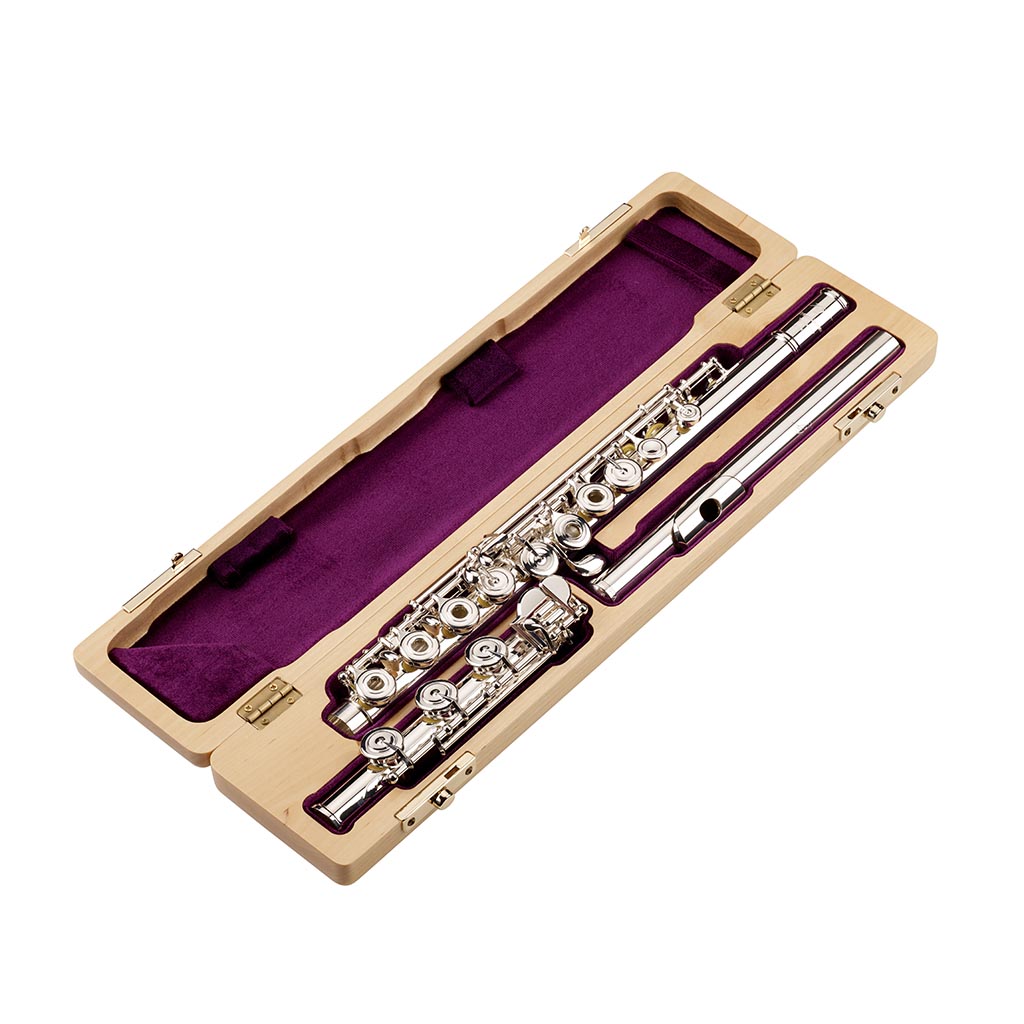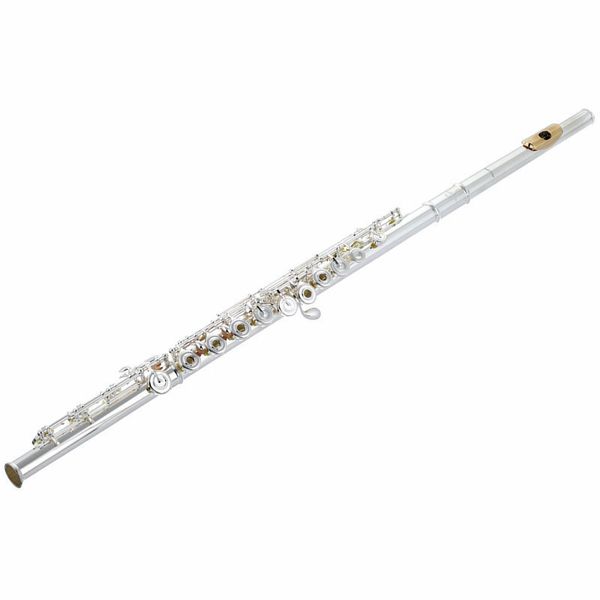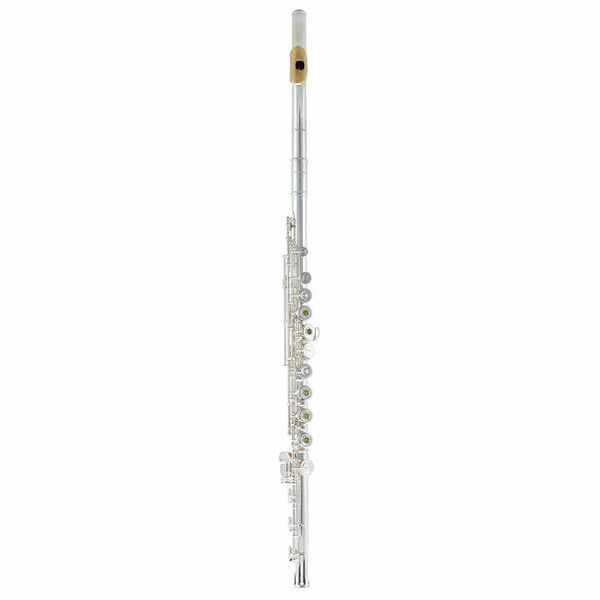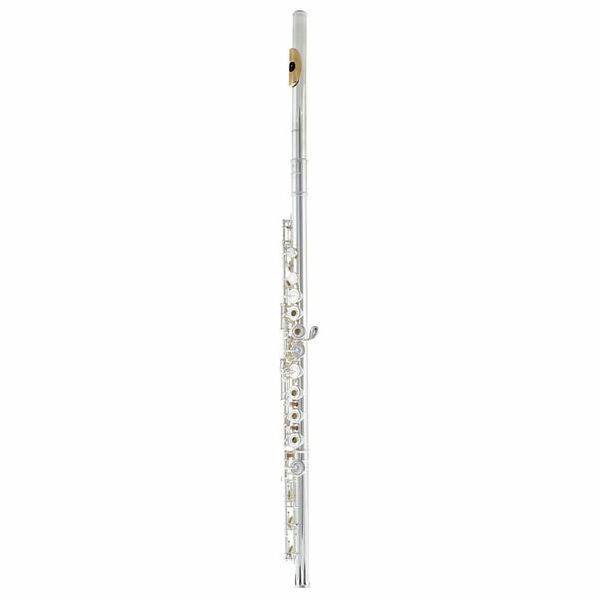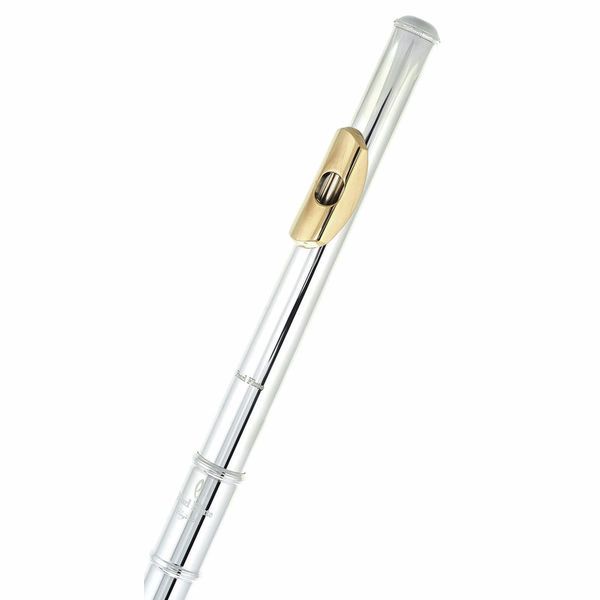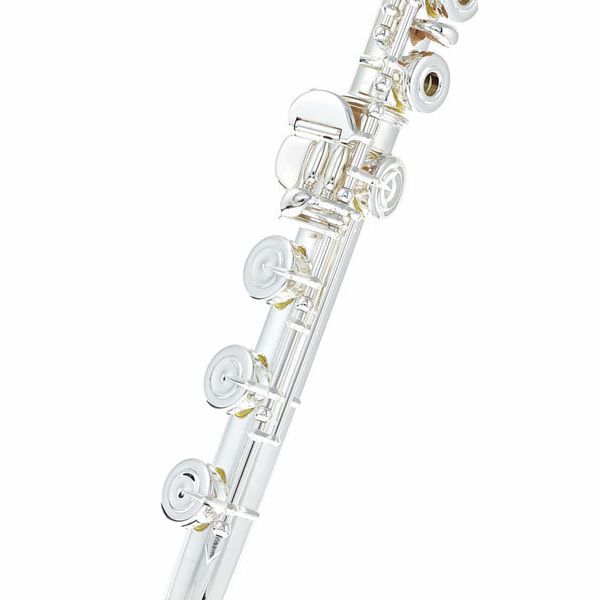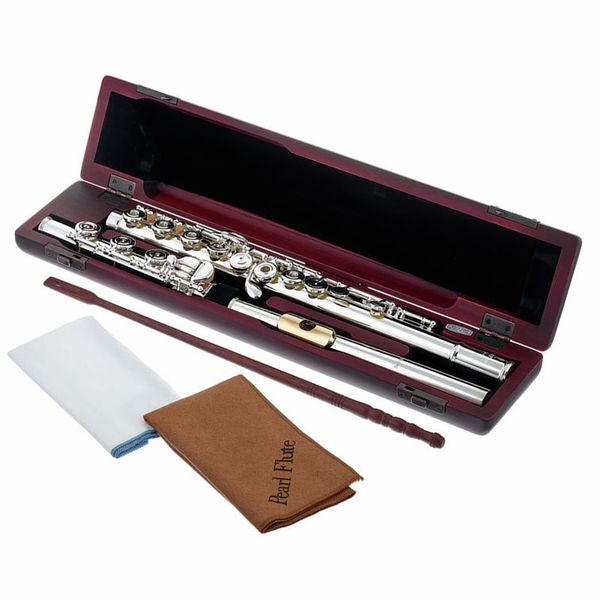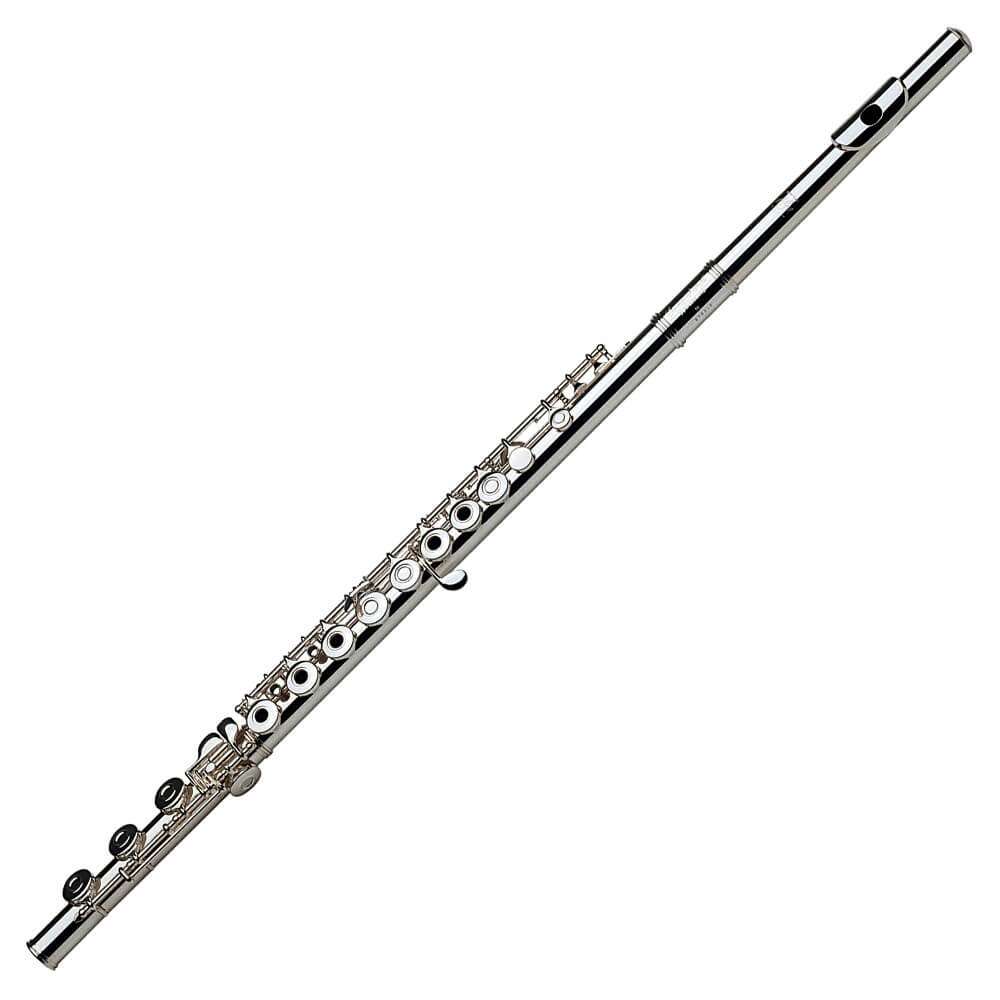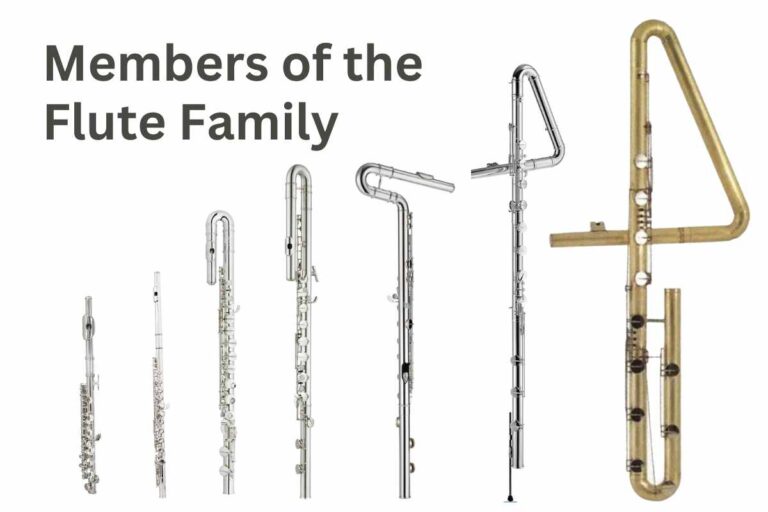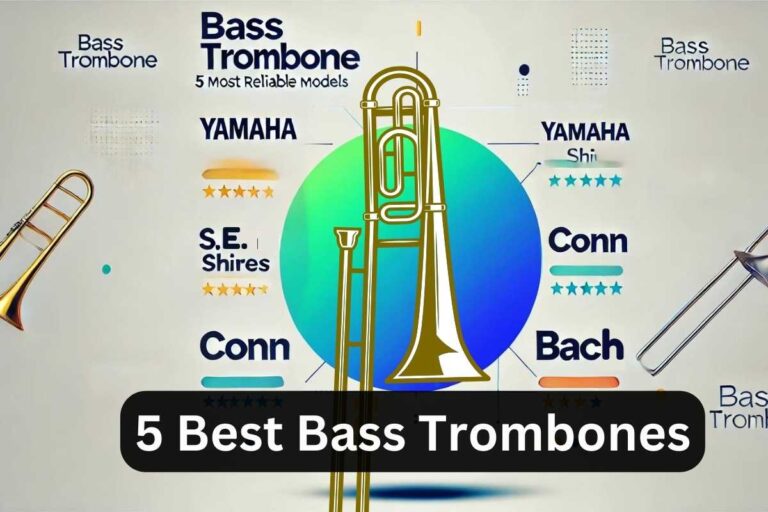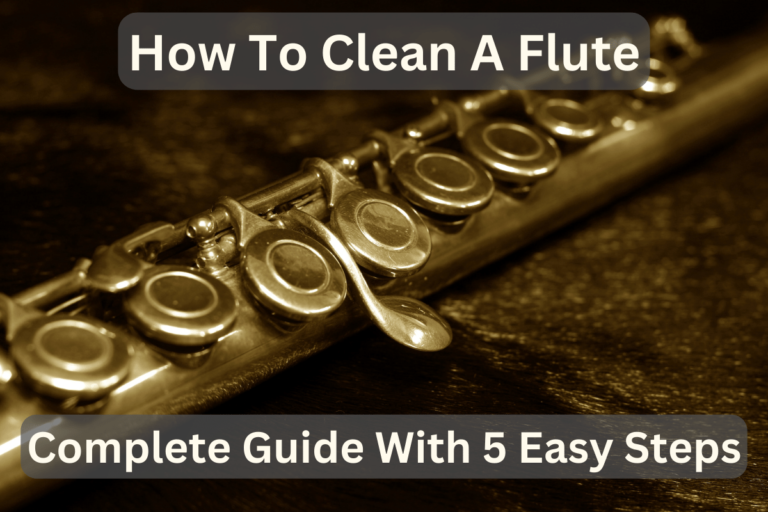Best Intermediate Flute – 9 Options – Learn When To Update Beginner and How to Pick The Best Flute

Looking for the best intermediate flute? I’ll guide you through five top options, their features when to switch from a beginner flute, and how to pick the best flute for your needs.
I’ve researched numerous options and compiled a list of the top 11 intermediate flutes to help you make a decision.
What Is The Best Intermediate Flute and The Best Flute Brand?
You find a wide variety of intermediate flutes in the market — each with its own pros and cons. With so many options, it is overwhelming to decide which one best suits you.
Personally, I have a soft spot for Japanese-made flutes, especially Pearl or Yamaha.
However, preferences vary widely among musicians. Other famous flute brands are Trevor James, Gemeinhardt, Azumi, and Jupiter. (Find other 13 Best Flute Brands in my post)
Ultimately, the best way to find your perfect flute is to try out them all!! Spend time with each one and see which resonates with you — the right flute will feel like an extension of yourself!!
1 Yamaha 300-500 Series
Yamaha flutes start with their 200 Series Student Flute. This entry-level model with a standard student headjoint, perfectly suits beginners.
But Yamaha doesn’t stop there — they incorporate a solid silver headjoint to the body, creating their 300 Series. In the 400 Series, Yamaha upgrades the entire body to silver.
The real transformation in the Yamaha lineup begins with the 500 Series (and beyond) — you’ll notice a significant leap in performance!!
While the 200, 300, and 400 share the same headjoint, providing a consistent experience across these models, the 500 Series introduces a hand-cut headjoint for different tonal quality.
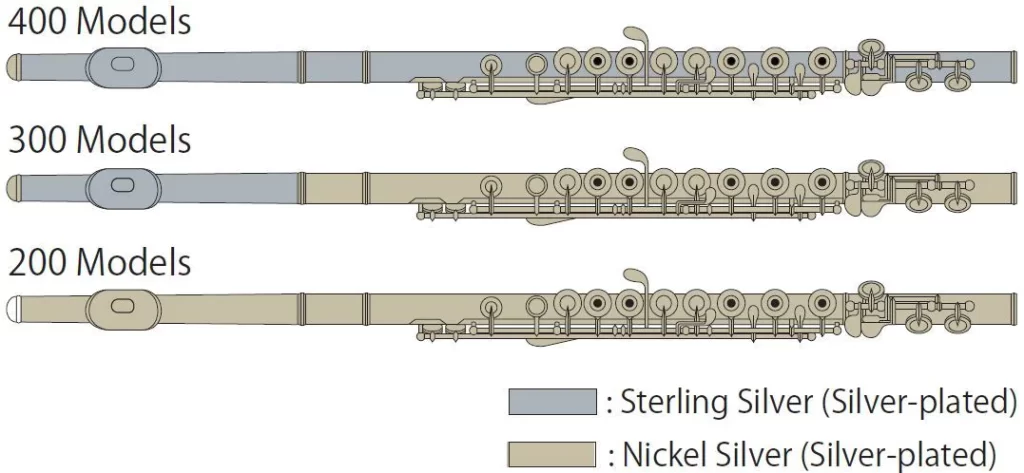
Yamaha 500 boasts a smoother (more responsive) mechanism, offering a “broader” dynamic range and richer tonal colors.
Yamaha Flute Series Breakdown:
- Yamaha 200 Series — Entry-level flute with standard student headjoint.
- Yamaha 300 Series — Silver headjoint with silver-plated body and footjoint.
- Yamaha 400 Series — Solid silver intermediate flute.
- Yamaha 500 Series and Up — Hand-cut headjoint, superior mechanism.
Prices
$1,200 – $20,000
Official Website
Rank
8 out of 10
Most popular models
YFL-362 Intermediate Yamaha Flute
Features:
- B foot joint with Gizmo key
- Offset G key
- French (open hole) keys
- Sterling silver .925 head joint
YFL-462 Intermediate Yamaha Flute
Features:
- B foot joint with Gizmo key
- Offset G key
- French (open hole) keys
- Sterling silver .925 head, body and foot joints
Yamaha flutes are popular among students and teachers alike (because they are affordable and available). Maintain your Yamaha flute well, and it will be a lifelong instrument.
2 Altus Azumi AZ-1, AZ-2 or AZ-3
What clearly distinguishes the Azumi flutes is the design of their headjoint.
AZ series Azumi headjoints are the same as on PRO Altus flutes — meaning you’re getting a professional-grade flute.
- Fuller Range — A broader spectrum of easily accessible notes
- Superior Intonation — Consistent intonation across all frequencies.
- Dynamic Playability — Effortlessly switch between loud and soft dynamics
- Richer Response: — Faster (more nuanced) responses
- Resonant Tone — Much more vibrant and resonant tone
The jump from a student flute to an Azumi flute is like night and day — you’ll quickly hit the low B and all the high notes, keeping excellent response!
Altus Azumi Flute Series Breakdown:
- Z1: 925 sterling silver for lip-plate and riser.
- Z2: 925 sterling silver for headjoint, lip-plate and riser.
- Z3: 925 sterling silver for body, headjoint, lip-plate and riser.
Prices
$1,200 – $6,000
Official Website
Rank
6.5 out of 10
Most popular models
Azumi AZ1 Student Flute
Features:
- Nickel silver body
- Silver plated B foot joint with Gizmo key
- Open French keys
- Offset G
- Split E
Azumi AZ3 Professional Flutes
Features:
- Z cut headjoint
- Split E Mechanism
- Open French keys
- Offset G
- B Foot joint with Gizmo key
- French-Style Key Arms (pointed)
- French Case and Cover included
Altus Azumi AZ-1, AZ-2, and AZ-3 are solid choices for the advancing flutist, offering PRO head joints and top-notch materials.
3 Powel Sonare 501 (601)
At the heart of each Sonare flute lies the PRO-level, handmade Powell headjoint.
It is no ordinary headjoint but — instead, a work of art with the maximum capability to produce the best (possible) sound.
Powel created Sonare 501 with the student in mind and built it with a sterling silver headjoint, silver-plated body, and footjoint (available with B or C foot).
It also has open-hole keys, an offset G, and a split E mechanism— this instrument will bring flawless intonation and a warm, vibrant voice.
That is a feature in this upgrade: You can get an Aurumite 9K Lip Plate with a K-Style headjoint.
Each Sonare flute comes from a state-of-the-art Powel facility — where tradition meets with technology.
4 Di Zhao 501 (601)
Di Zhao flutes are famous for providing PRO features, yet still at an affordable price.
Hand-cut headjoints are one of the features across all Di Zhao flutes!
Di Zhao 501 French-style curved arms provide more key action and better precision. It also features a C# trill key, a split E mechanism
Di Zhao Flutes Breakdown:
- Di Zhao 401 — student silver-plated flute and key mechanism
- Di Zhao 501 is a solid silver headjoint, silver-plated body, and footjoint intermediate flute
- Di Zhao 601 — a solid silver flute for advanced students or semi-professional players. The key mechanism (refined) allows faster, more accurate playing
Di Zhao (the company’s founder), has over 30 years of experience making flutes (middle C, piccolo, alto, bass, wooden flutes) and reflects his knowledge (and skills) in the quality of Di Zhao flutes.
Prices
$650 – $13,000
Official Website
Rank
6.5 out of 10
Most popular model
Di Zhao 601 Intermediate Flute
Features:
- Solid sterling silver headjoint
- French (open hole)
- Pointed key arms
- Split E mechanism
- Offset or inline G
- B footjoint
5 Trevor James “Chanson” With ‘Voce’ 958 Headjoint
Chanson (“Cantabile” in France) flutes come with the ‘Voce’ 958 headjoint model — an innovative piece of art!
The story of Trevor James Flutes began in the late 1970s in the United Kingdom when the company started manufacturing instruments (flutes and saxes) for all levels of musicians.
JT Flutes soon established an international name (distributing to 59 countries worldwide) for great workmanship and tonal quality.
TJ uses 95.84% silver in their Chanson flutes (surpassing the industry 925 silver standard). That gives you more possibilities in tone production with a rich, resonant instrument.
The ‘Voce’ has unique cuts and designs (unlike any other) for extra playability and sound projection. TJ team in England ensures a clear, vibrant note for every phrase!
The Italian pads affect the general sound quality (with respect to durability), providing a strong, consistent seal for precise articulation and expression.
Prices
$1,000 – $10,000
Official Website
Rank
7 out of 10
Most popular models
TJ Chanson Intermediate Flute
Features:
- .958 silver head joint, lip, riser and headjoint tube.
- Pointed key arm mechanism
- Japanese tubing
- C footjoint
- Offset G
TJ Virtuoso Series Professional Flute
Features:
- 958 silver headjoint
- 925 silver body and B footjoint
- Pointed key arms with Italian keys pads
- Durable cherrywood case
- Weighted headjoint crown
- One-piece lip and riser for a little extra weight resulting in a rich, warm sound
The TJ “Chanson” bridges to the PRO-level stage — no matter whether you are an orchestra, solo, or chamber flute player.
6 Pearl “Quantz” Intermediate Series
Pearl Musical Instrument Company stands out as a beacon of quality and innovation.
Recognized globally for over 50 years, Pearl produces each flute (from student to PRO line) with French pointed arms upgraded with a One-Piece Core-Bar and Pinless mechanism.

This patented (in 1972) design gives you continually smooth keys, setting a new standard in flute manufacturing.
Pearl remains the only flute manufacturer to incorporate these features into every flute. Pinless mechanisms reduce maintenance and increase the instrument’s lifespan, while the One-Piece Core-Bar stabilizes and precisely aligns keys.
You can choose one out of three Quantz headjoint cuts: the traditional “Largo,” the advanced and elegant “Forza,” and the lively “Brezza” — choose the head joint that fits your style!
Pearl “Quantz” Series Breakdown:
- 500 — Silver plated flute with C-foot
- 525E — .925 silver lip-plate and riser, with a silver-plated headjoint, body, and mechanism
- 665RBE — .925 silver flute and mechanism
Prices
$650 – $40,0000
Official Website
Rank
8 out of 10
Most popular models
Pearl Quantz
Intermediate Flute
Features:
- (.925) sterling silver Forza, Largo, or Brezza head joint cuts
- Split E
- Offset G key
- B footjoint
- French (open hole) model
Pearl Flutes 795 Elegante Series Professional Flute
Features:
- Full solid silver body
- Sterling silver B footjoint
- Silver plated mechanism material
- Silver plated open keys
- Offset G, C# trill and D# roller
The Pearl Quantz flutes gateway you to a richer musical experience — with a choice of headjoints, it offers you the unique sound and style you need to shine!!
7 Gemeinhardt 3SB – NG1
When you play a Gemeinhardt flute, you’re not just holding an instrument — you’re embracing a legacy.
When you play a Gemeinhardt flute, you’re not just holding an instrument — you’re embracing a legacy.
Kurt Gemeinhardt, a fourth-generation German flute maker, established the Gemeinhardt brand to bring a rich heritage of craftsmanship and tradition. Apprenticed under Emil Rittershausen, Kurt Gemeinhardt infused his flutes with German traditions.
While its roots are in Germany, Gemeinhardt proudly manufactures their flutes in Elkhart, Indiana.
The Gemeinhardt 3SB silver flute features the NG1 sterling silver head joint, recognizable for its rich, vibrant tone and excellent playability.
3SB – NG1 features a B footjoint and the French (open hole) keys.
Prices
$500 – $5,000
Official Website
Rank
6.5 out of 10
Most popular models
Gemeinhardt 3B Student Flute
Features:
- Full solid silver-plated body and headjoint
- Offset G
- Inline G
- C footjoint
- Durable case with black nylon cover
- Proudly made in Indiana, USA
Gemeinhardt flutes have “soft mechanisms” for a delicate, responsive touch — this enhances playability but requires careful handling to avoid damage!
8 Jupiter JFL1000RBO
While Jupiter and Gemeinhardt flutes are both player-friendly in price, each has something else to offer.
Gemeinhardts have a tradition of fine artisans, but you might find some with monotone colors or lack flex in playing.
Flutes from Jupiter have a slightly more resonant tone and are of a longer projected life!
Jupiter JFL1000RBO isn’t just affordable — Its .925 sterling silver head joint produces robust and warm sounds and guarantees solid musical experiences.
Prices
$1,000 – $5,000
Official Website
Rank
7 out of 10
Choosing the Jupiter JFL1000RBO means investing in an intermediate instrument without breaking the bank — embrace the rich, resonant sounds and elevate your musical journey.
What To Consider Upgrading From a Beginner to Intermediate Flute?
Changing on an open-hole flute is tricky. It’s way easier if you do it step by step.
The fingerings remain precisely the same, with a tiny exception if you are upgrading to a flute with a B foot. (Check my post on Flute Fingering Chart Guide)
You will need to learn just one new low B fingering using a standard, another low C, and C#.
There is no reason to upgrade if your closed-hole beginner flute is still in good working order.
You can perform many high school band pieces on a student-model flute. If you are happy with your flute and it works for you, by all means — keep playing it!!
When you decide to upgrade, don’t toss your old student version in the trash — resell it to a beginner (e.g., a sixth grader starting a band) so it doesn’t end up in the landfill!!
Regardless of the flute you purchase, expect to spend about $500.00 per year on maintenance. Regular checkups keep your instrument in top playable condition at a minimum cost. Your flute may well be your “forever” flute.
Material Matters For The Best Flute
Flute materials are crucial when upgrading your flute. Here are the basic options:
- Student Models — Nickel (or silver-plated materials, durable and easy to play
- Intermediate Models — Solid sterling silver headjoints (the first segment) with a silver-plated body and footjoint to improve sound quality and responsiveness
- Professional Models — Solid sterling silver provides the richest tonal quality and the best response
Combining a sterling silver headjoint and open-hole keys is a game-changer. It’s not just about the material — the design of headjoints (“cuts”) plays a crucial role in the flute’s sound (arguably even more than the choice of metal).
Defining Your Goals When Switching To Intermediate Flute
Consider the following questions:
- What are your “aspirations”? Are you taking private lessons, passionate about improving, and pursuing music further (solo competitions or music college programs)? Or do you play just for fun and relaxation?
- What do you want to improve with your current instrument? Are you looking for a better tone? Are some notes consistently out of tune? Are you struggling to play certain notes?
- Do you aspire to play in orchestras or chamber groups? If so, you need an intermediate model with higher amounts of silver to enhance your playing.
Understanding your goals and limitations helps you choose the right intermediate flute.
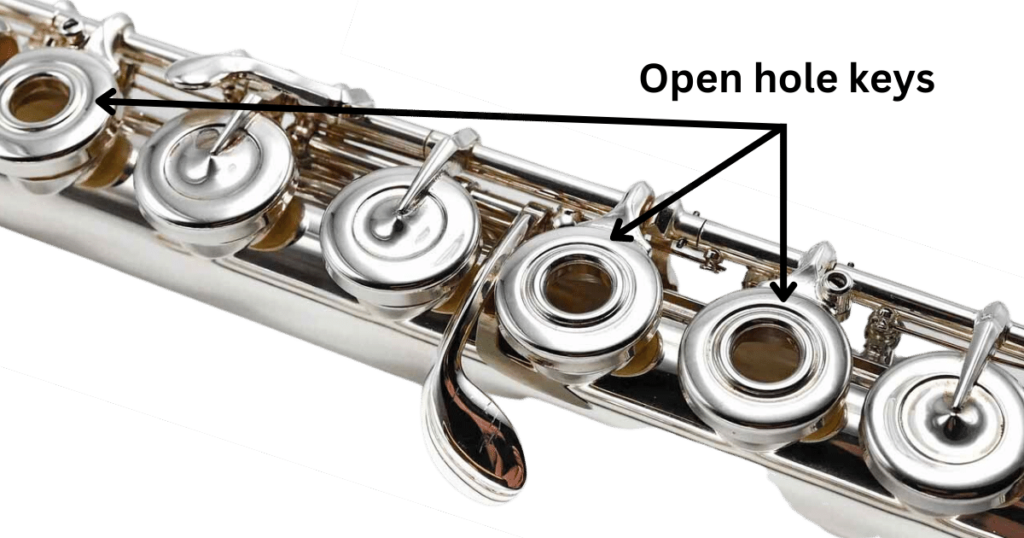
Benefits of open holes in an intermediate flute
Transitioning to an intermediate flute typically means getting open-hole keys, which is a bit intmidating at first.
The fingerings are the same throughout, the only exception being the low B note, which is quite similar to the low C and C# notes.
Open holes allow you to fine-tune the intonation and color of your tone just by hovering your fingers over them—a nuance you can’t get in a closed-hole design.
Slide your fingers softly over the open holes to add a touch of subtlety to the nuances in your playing and bring musical expression to life.
This further develops a more accurate hand position, an essential technique in playing.
Choose what fits your budget best — most manufacturers now offer open-hole flutes. You can find quality intermediate flutes with open holes that suit various price ranges. (Read more info in my Closed vs Open Hole Flute post)
You can use key plugs to fill open holes, allowing you to get used to a new feel without losing all fingerings. Below is a step-by-step guide:
- Critical plug installation — Insert the plugs into all five key holes
- Gradually Take the Plugs Out — Remove your plugs one after another, using a small needle to lift your plugs gently and avoid scratches
- Practice and Tweak — Only unplug as you feel confident with the current sound!! Begin at the top and work your way down. The ring fingers on each hand are the most challenging — so take your time (even if it takes several months)
Understanding the Split E Mechanism, Offset G and C# Trill
The Split E, the C# Trill, and the Offset G are not features that make you a “better” player — they just improve your playing experience!!
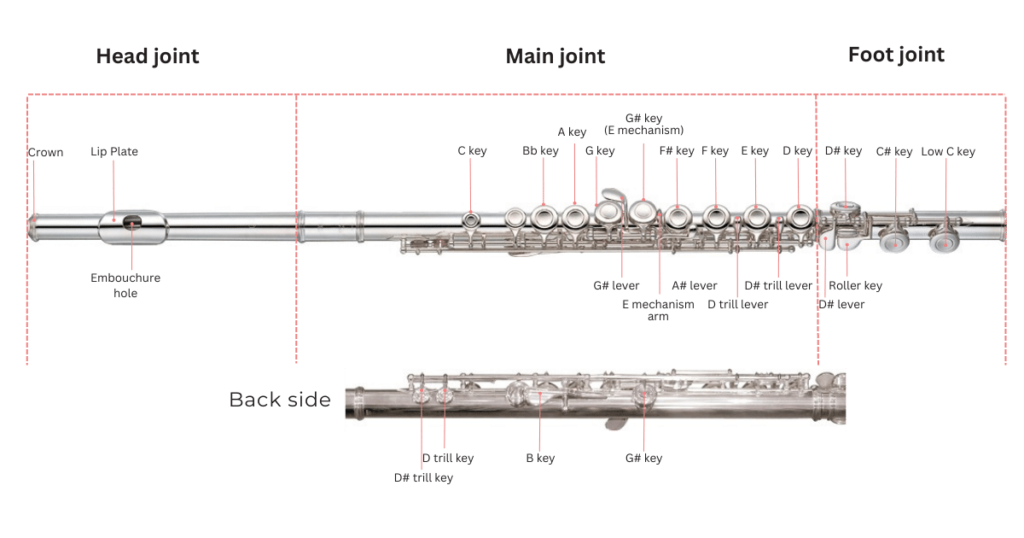
Split E Mechanism
The Split E is a fantastic mechanism that simplifies playing the high E note (challenging for beginners as it sounds squeaky). It splits the key to produce a clearer, more stable high E
C# Trill Key
The C# Trill key allows smoother and quicker transitions between notes, making your “trilling” more fluid. The C# trill key is a bonus — but it’s not necessary
Offset G vs. Inline G
Two main G key configurations — Offset G and Inline G
- Offset G — The third pad for the left hand (which helps produce the G note) is slightly offset from the other two. Many players in the US prefer the Offset G for its ergonomic benefits that prevent strain during long practice sessions.
- Inline G — All the pads are in a straight line. You may find it comfortable, tho it is less common than the Offset G.
Neither the Split E Mechanism nor the C# Trill or Offset G makes a flute more “advanced” or indicates a “better” player — these features simply enhance your playing experience. (Check my post on Different Flute Parts)
What Is The Best Intermediate Flute Scale?
Start with a C natural middle scale.
Then, dive into G# or G—these are great, easy-to-play scales with new depth in the tonal quality. Move gradually to lower scales (F# and F), adding more depth to your music.
When you have trouble finding the fingering for a new scale to play on the flute — just drop back and play a lower scale for a few days.
For example, if G# or G feels awkward, play an F# or an F for a few days, then return to the G — you will find that the fingering now seems noticeably easier.
G and F scales provide wide ranges of notes and are versatile in an extensive range of musical genres — they sound warm, mellow, and expressive, thus relaxing…
Selecting C Foot Joint or B Foot Joint for Intermediate Players
The foot joint is the 3rd and final flute section, which increases the range of your flute.
A C or a B foot joint influences the notes you can play. Most student flutes have a C foot joint (which allows you to play down to low C).
The C foot joint is lighter — great for someone just learning the basics.
The B joint lowers your flute one note down and adds extra weight and length — it will feel added at first, but the payoff is great. You can explore the lower notes with depth and resonance, hence a richer sound.
How to Choose the Flute That Fits Your Needs?
First, talk to a flute teacher or professional flutist who will listen to how you play — they will tell you if your instrument is holding you back.
Then, go to one of the stores online (or near you) and order a few alternatives.
Pro Tip: DON’T rush this process. Sit down and spend some time playing through each flute and learn to get a feel for what playing it feels like.
You NEED to play on some models! You must try at least 4-5 different models before the proper flute becomes an extension of yourself!
The Best Intermediate Flute Learning Materials
The Rubank Method is a go-to teaching resource that many tutors and PROs use. It is systematic and detailed with the essentials — scales, arpeggios, and many other techniques any aspiring flutist needs to have.
Books of Trevor Wye is another resource from one of the most popular flute teachers around today. He created numerous exercises for the book — difficult but satisfyingly rewarding — learning to produce a richly expressive sound.
Gariboldi and Köhler are another excellent study for refacing problems.
The Best Intermediate Flute Classical Music Pieces
Following is a compilation of masterpieces and collections of intermediate flutist repertoire that will (hopefully) BOLSTER your talent and love of the flute.
- “Flute Music by French Composers” — Any flutist would be remiss without owning this collection
- Telemann’s “Twelve Fantasies” — Perfect for developing your ear and embouchure
- The Flute Collection — Intermediate Level from Schirmer
- Telemann Ouverture-Suite in A minor — A great intermediate piece with demand in technicality and opportunity for expression
- Flute Sonata in A minor, H.562 — An exciting and rewarding three-movement piece, good for competition and personal development
- Carl Stamitz Duets, Op. 27, Duet No. 5, mvt: Allegro — Excellent for warming up with a friend. Duets improve listening skills and add a new dimension to practice sessions
- Mozart’s Andante in C — A beautiful piece that adds a lyrical quality to your playing
- Handel Sonatas — Essential for understanding baroque style and articulation
- Bloch’s Suite Modale — A gem from the 20th century, adding modern flair to your repertoire
- 24 Short Concert Pieces — A collection with variety and substantial technical work
- Bach’s Partita in A Minor and Kuhlau’s Grand Solos — Must-haves for any intermediate flutist — challenging but delightful, with technically active scales and arpeggios in different rhythmic figures
- Hermann Beeftink — Modern, Celtic, Native American, Middle Eastern, and flamenco
- La fille aux cheveux de lin by Chopin
- Souvenir Russe by Köhler
- Russisches Zigeunerlied by Wilhelm Popp
Conclusion
I hope this top 11 list of Intermediate flutes for 2025 has provided valuable insights and helped you narrow down your choices.
Remember, the best flute is one that resonates with your playing style and inspires you to practice and perform.
Take your time to try out a few options and find the one that feels right for you.
Happy playing!

